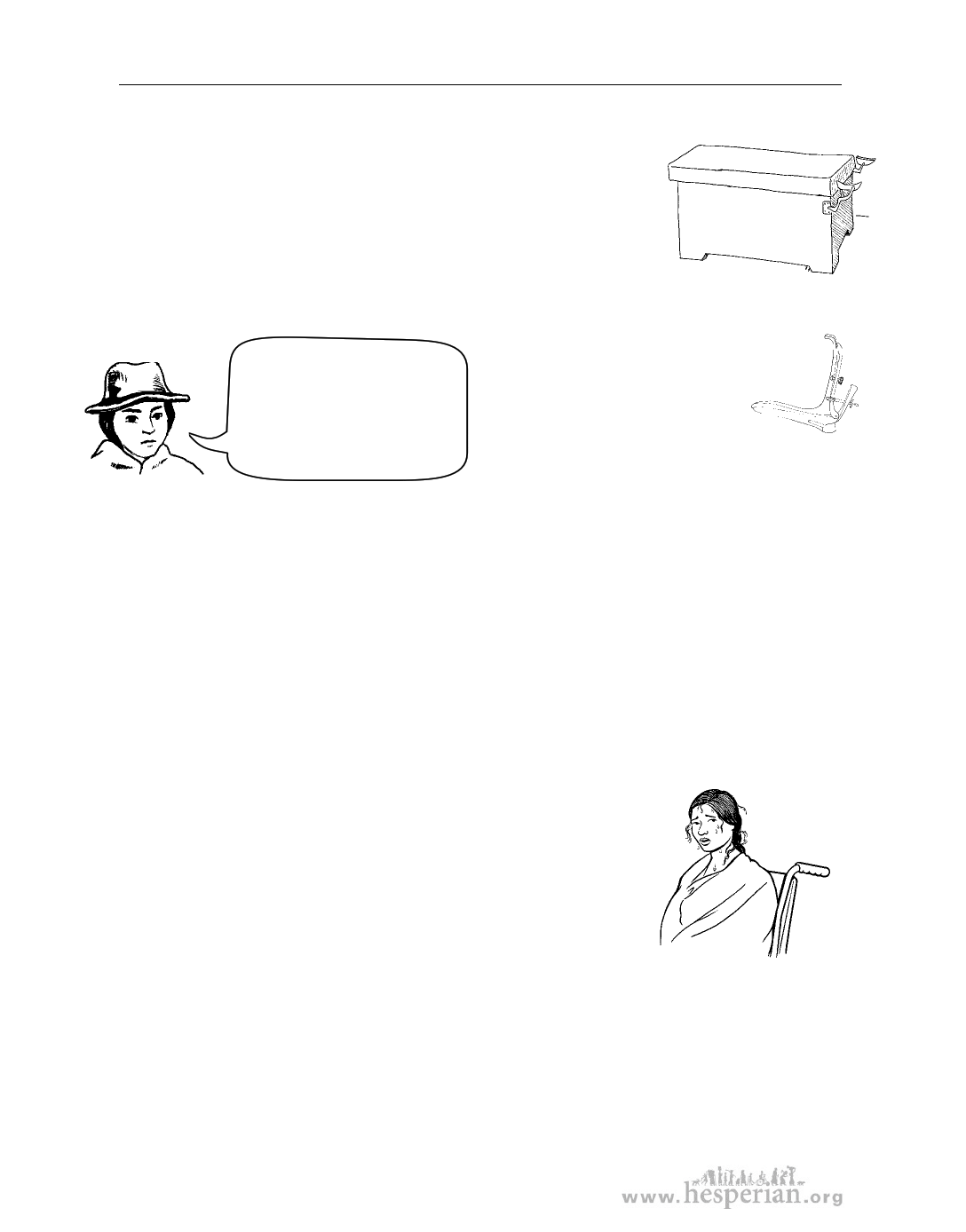
132 chapter 6: Health exams
To the health worker:
In many clinics and hospitals, exam tables are high and hard
to use for women who have difficulty moving their legs or
holding them in place.
Tables closer to the ground are best for most women with
disabilities. But you do not need to use a special table to do a
pelvic exam. A health worker can do this exam on any clean,
firm surface—even on a clean cloth on a clean floor.
A health worker at the clinic
told me she could not do the
To examine someone
on the floor, turn the
exam because I could not get
onto the table. So I asked her
to do the exam on the floor.
handle of the speculum so
it faces up when you put it
into the woman’s vagina.
Otherwise the speculum
will be hard to open. To
make sure the speculum does not touch the floor, put some folded
cloth under the woman’s hips to lift them a little.
A speculum can
be used upside
down to examine
someone on the
floor.
Many women are frightened when they first see a speculum. They
imagine that it must hurt them when it is put inside their vagina. When you
examine a woman who has never had a pelvic exam before, show her a very small
speculum, even if you plan to use a larger one. Make sure she is relaxed, touch her
gently, and always explain what you are about to do. When the exam is finished,
thank her for making it so easy for you to do the exam.
For more suggestions about making exams easier for women with different
disabilities, see pages 133 and 134.
Take precautions to prevent dysreflexia (sudden
high blood pressure with pounding headache)
Dysreflexia is common in people with spinal cord injuries.
It is the body’s reaction to something that would normally
cause pain or discomfort, but which the person does not
feel because of the injury.
During a woman’s pelvic exam, dysreflexia can be caused by:
• a woman’s body touching a hard exam table or surface (even if she cannot feel it).
• pressure in the vagina or rectum from the hands of the person doing the exam or
from an instrument (such as a speculum), especially if it is cold.
• cold temperature in the clinic where the exam is being done.
• a urine tube (catheter) that has become bent or twisted.
A Health Handbook for Women with Disabilities 2007